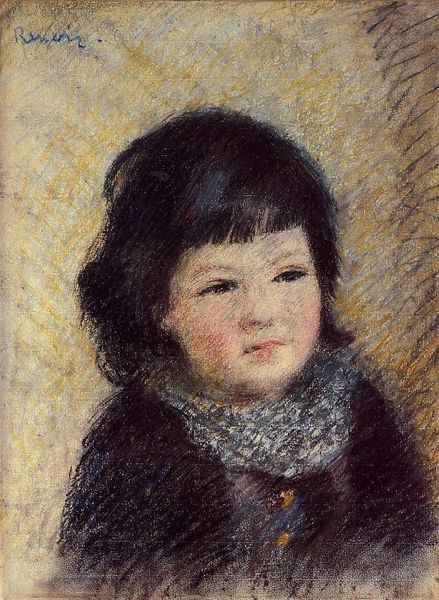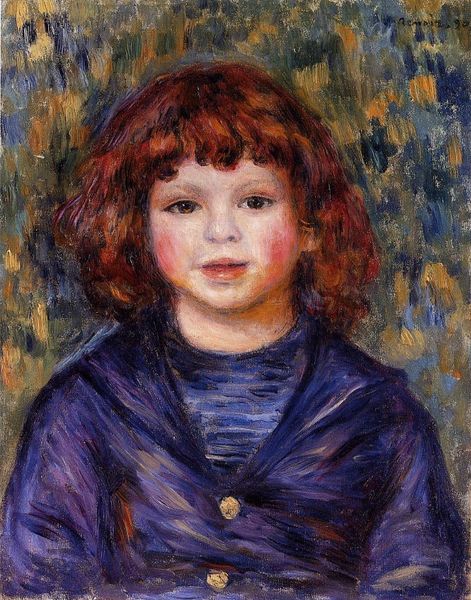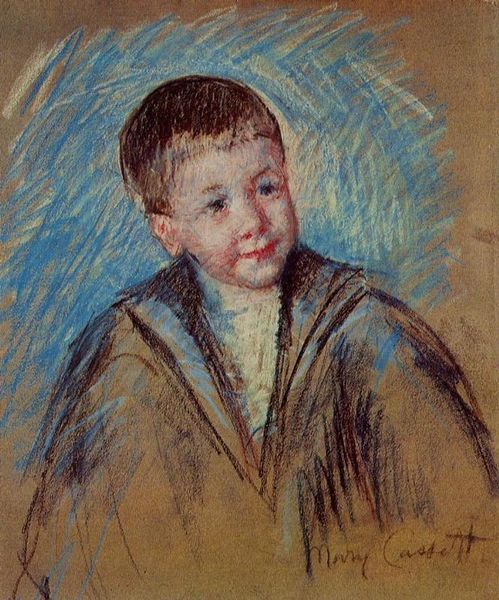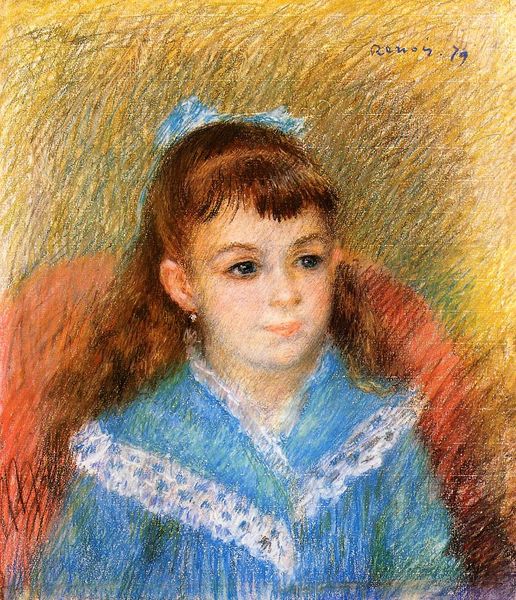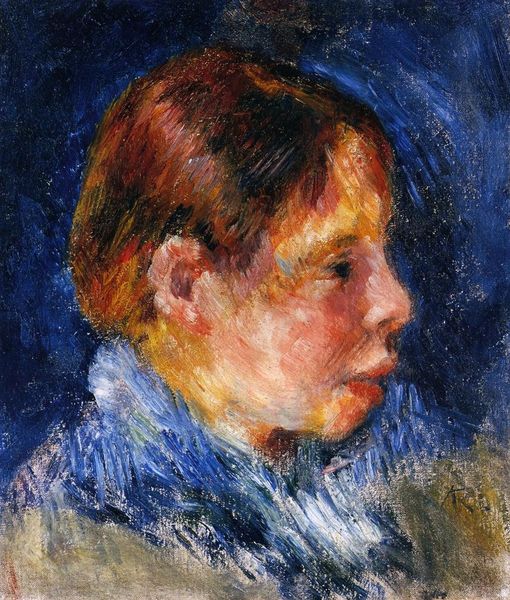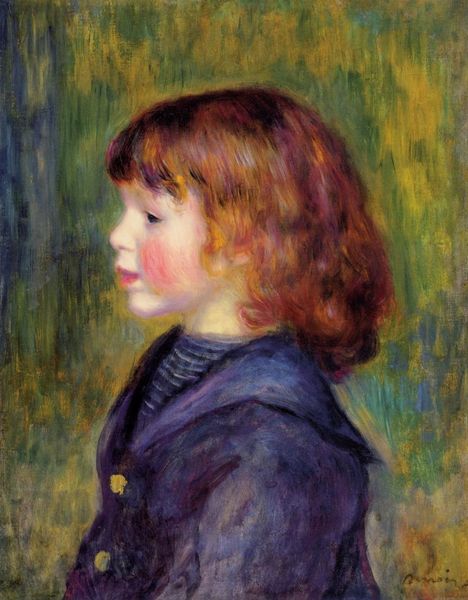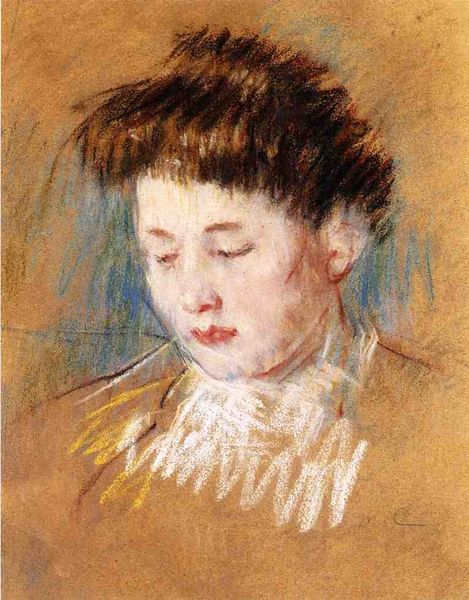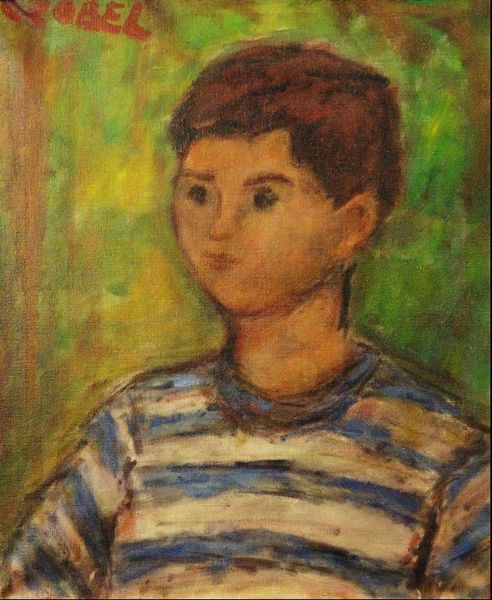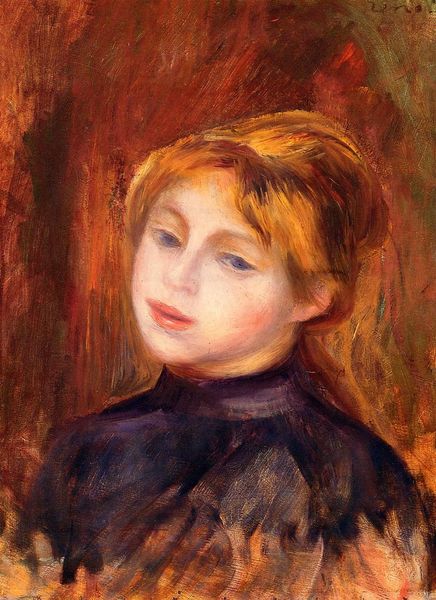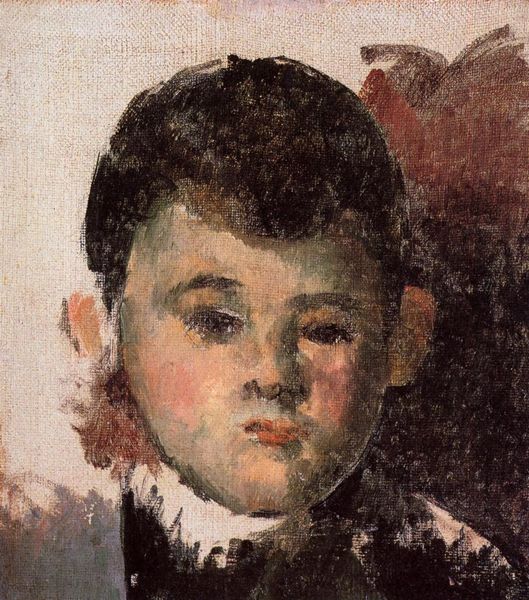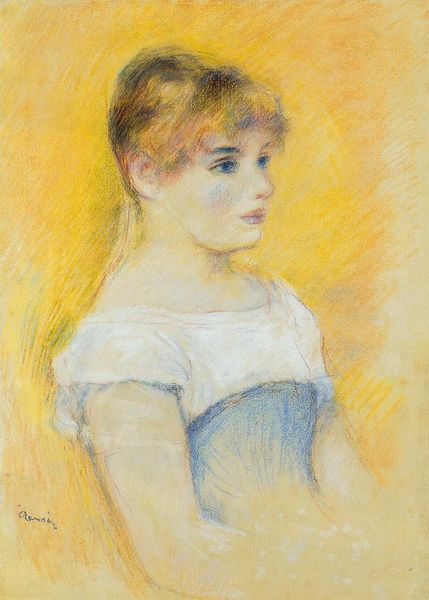
drawing, pastel
#
portrait
#
drawing
#
impressionism
#
figuration
#
pastel
#
post-impressionism
Copyright: Public domain
Curator: Before us we have Pierre-Auguste Renoir's "Portrait of Pierre," a pastel drawing created around 1890, currently held in a private collection. It's a compelling example of Renoir's engagement with childhood and portraiture within the Post-Impressionist movement. Editor: It has an immediate and tender quality. The boy's gaze is so direct, so open. It strikes me as more intimate than formal; it feels as if you're face-to-face with someone you know and love. Curator: Renoir was, of course, deeply embedded within the cultural milieu of his time, a period undergoing tremendous societal and political transformation. The burgeoning middle class craved personalized portraiture. But portraits of children presented unique considerations: societal norms regarding youth, family, and domesticity were quickly shifting at this moment. Editor: Right, and consider how he’s rendered. The eyes are soulful and oversized for someone of his age. Notice the subtle details-- almost haloed by the warm background-- and the slightly parted lips that gives him an innocent yet worldly expression. Pastel itself, a fragile medium, only adds to that sensibility. Renoir isn't just painting a likeness, he’s conveying emotion, a feeling. He's inviting us to experience Pierre's childhood innocence. Curator: Yes, absolutely. It's worth noting, that Renoir's art served the growing Parisian bourgeoisie, providing access to artwork which also affirmed cultural values-- which included the family unit. Portraits were acts of cultural and societal performance. His choices undoubtedly solidified and further disseminated then-current expectations around childhood innocence. Editor: I wonder what Pierre thought of it. Do you think that he found his image accurate? After all, Renoir chose to depict Pierre this way for posterity, or to promote the innocence of children-- as opposed to anything specific or insightful about him as a growing young person. We can assume a particular reading on the part of Renoir by what and how he chose to render Pierre. Curator: That tension you mention highlights one of the core aspects of childhood portraiture—a symbolic construct manifested by social expectations rather than simply the subject's self-image. Ultimately, it asks questions about how images reinforce societal norms through symbolism. Editor: It's intriguing to unpack such depth in a portrait with this artwork! It makes you reflect on not only Renoir’s gaze but also how we continue viewing these portraits within today’s societal context.
Comments
No comments
Be the first to comment and join the conversation on the ultimate creative platform.
